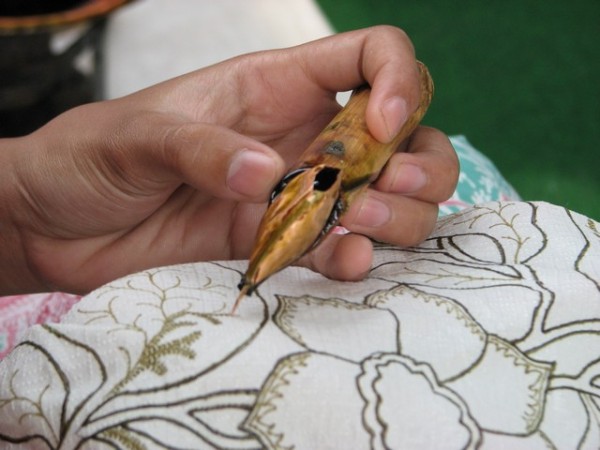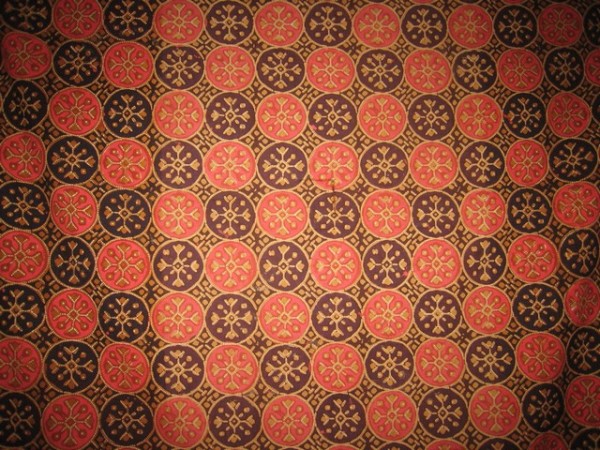History of Pekalongan Batik Motifs and Explanations — Pekalongan City is a city in the West Java area which is directly connected to Batang Regency on the east side, then the Java Sea on the north side, and Pekalongan Regency on the south and north sides. According to the autonomous regional sheet KTPS-PPD/00351/II/1958: the origin of the name Pekalongan comes from several connection words which have the basic word “halong” from Dutch to “A-Pek-Halong-An” which means pengangsalan in Javanese and means income in Indonesian. This city is also located in the north coast area which is connected from Jakarta to Semarang-Surabaya via the northern route about 100 km from Semarang and 384 km from Jakarta City and don’t forget to take advantage of Nasi Megono (sliced jackfruit mixed with grated coconut sauce, served while warm, mixed with grilled fish) which is a typical food of Pekalongan. The city of Pekalongan has a quite quirky nickname, namely the city of batik Pekalongan, thus making the city included in the creative city network by UNESCO in the category of crafts & folk art at the end of 2014 and has a city branding, namely the World’s city of Batik.

History of Pekalongan Batik Motif
Pekalongan batik, as the name implies, is a type of batik made by the people of Pekalongan. The majority of Pekalongan batik craftsmen live in the northern coastal areas of the island of Java. This makes Pekalongan batik also commonly referred to as coastal batik.
The history of Pekalongan batik notes that there are factors of cultural influence from the surrounding community which are always changing and imitating each other at first, giving rise to the creativity of Pekalongan batik craftsmen to always make new Pekalongan batik motifs, this in my opinion is a development of sudagaran batik itself which tends to be free in its motifs but still refers to the batik grip. Pekalongan batik became more developed after a Dutch batik entrepreneur named Eliza Van Zuylen built a workshop in the area. Based on the direction of the entrepreneur, the new Pekalongan batik motif was also successfully created by the Pekalongan batik craftsmen who specifically made the latest Pekalongan batik motif to be sold to the batik entrepreneur. Eliza Van Zuylen is also one of the people who have a big role in the emergence of new motifs from Pekalongan batik. Through the hands of this entrepreneur, Pekalongan batik was able to penetrate the European market share where the buyers of Van Zuylen batik, mostly European nobles, also uploaded Van Zuylen’s own popularity in Europe in the period between 1923 and the end of 1946. This entrepreneur is very famous for his batik products. superior to the smoothness of the fabric with the batik motif of plants until now it is better known as a characteristic of the Pekalongan batik motif, in addition to the jlamprang motif. Pekalongan batik has its own advantages when compared to other regional batik cloth products, namely in terms of coloring which tends to be brighter and more attractive.
Pekalongan Batik Motif
The following are some of the characteristics of Pekalongan batik motifs, including:
- The classic Pekalongan batik motif is a cement motif. This motif is almost the same as the classic cement motif from other areas of Central Java, such as Solo and Yogyakarta. Inside the cement motif there are ornaments in the form of plants and an eagle/sawat. The difference between Pekalongan batik and Solo/Yogyakarta batik is that classic Pekalongan batik is almost non-existent. In classic Pekalongan batik, all motif filling is in the form of lines.
- The original motif of Pekalongan is the Jlamprang motif, which is a kind of nitik motif which is classified as a geometric batik motif. There is an opinion which states that this motif is a motif developed by batik batik of Arab descent. This is because in general Muslim Arabs do not want to use ornaments in the form of living objects, such as animals or birds. They prefer decorative geometric shapes. But Dr. Kusnin Asa has a different opinion where the Jlamprang batik motif is a batik motif that emerged due to the influence of Shiva Hindu culture.
- The color of soga batik cloth comes from plants.
- Some of the fabric patterns produced in Pekalongan have a Chinese pattern. This is indicated by the presence of a Liong ornament in the form of a large legged dragon and a Phoenix bird on the Pekalongan batik motif. The phoenix is a type of bird whose head and wing feathers are frayed, and the tail feathers are also wavy.
- Pekalongan batik fabrics developed by fine batik entrepreneurs of Chinese descent mostly have motifs in the form of realistic shapes and use a lot of cecek-cecek, and cecek sawut (dots and lines).
- Residents of coastal areas like bright colors such as red, yellow, blue, green, violet, and orange.
Pekalongan Batik Motif – Jlamprang
Jlamprang batik motifs are believed and recognized by some observers of batik motifs, as the original motif of Pekalongan. S.K Sewan Santoso, S. Text in his book Art of Indonesian Batik Crafts published by the Research Institute for Batik and Crafts, Institute for Industrial Research and Education, Ministry of Industry (1973), said that the Jlamprang motif in Pekalongan was influenced by Islam. That is, this motif was born from the Pekalongan batik craftsmen of Arab descent who are Muslim. Islam forbids drawing animals and humans in batik cloth and paintings so that it makes the Pekalongan batik craftsmen have creative ideas, namely by making the Pekalongan batik motif geometrically by nitik on the Jlamprang batik motif.
Dr. Kusnin Asa has another opinion that the Jlamprang batik motif is a form of cosmological motif by promoting a ceplokan pattern in the form of lung-lungan as well as lotus flowers which show a meaning about the role of the cosmic world that has come since Buddhism and Hinduism developed in Java. The ceplokan pattern on the motif which is distilled into a more decorative form shows that the pattern is a relic from prehistoric times which later became the heritage of Hinduism as well as Buddhism.
Pictures of Pekalongan Batik Jlamprang Motifs





Isen Batik Pekalongan Motif
The Pekalongan batik motif uses isen-isen in the form of dots or in Javanese it is known as cecek-cecek. The point can be a tick-line or a tick-pitu. It is very rare to find cecek-sawut or sawut models, as well as other isen such as cacah gori. The creativity in using this cecek is sometimes so dominant that all the lines that make up the pattern in the Pekalongan batik motif are also cecek. One of the examples of fine hand-drawn batik by “Oei Tjow Soen” is a Pekalongan batik that uses a very delicate batik motif full of cecek.

Bibliography History of Pekalongan Batik Motifs
- Asa, Kusnin, Batik Pekalongan dalam Lintasan Sejarah, Batik Pekalongan on History, Cahaya Timur Offset Yogyakarta, 2006.
- Brüninghaus, Cornelia and Knubel, Museum Education in the Context of Museum Functions, Running a Museum, A Practical Handbook, ICOM – International Council of Museums, 2004.
- Djoemena, Nian s, Ungkapan Sehelai Batik its mystery and meaning, Djambatan, 1990.
- Edson, Gary dan David Dean, The Handbook for Museum: Batik Pekalongan, Routledge, London and New York : 1996.
- Batik Pekalongan dalam Format Nominasi Batik Indonesia, 2008.
- Hein, George E. Learning in the Museum:Batik pekalongan, London: Routledge, 2002.
- Harmen C Veldhuises, Batik Belanda and batik pekalongan, 2007, Gaya Favorit Press, Jakarta.
- Susanto, Sewan, Batik Pekalongan dalam Seni Kerajian Batik Indonesia, Balai Besar Batik dan Kerajinan, Departement perindustrian. Jakarta, 1980.
- Kardi, Marsam, “Sejarah Perbatikan Indonesia”, Makalah Seminar Jejak Telusur dan Perkembangan Batik Pekalongan, Pekalongan, 18- 19 Maret 2005.
- Museum Batik Pekalongan, Komunitas Batik Pekalongan, Pekalongan, 2008.
- UNESCO, Convention For The Safeguarding of The Intangible Cultural Heritage, 2003.
- Watson, Sheila, Museum and Their Comunity:batik pekalongan, Routledge, 2007.
- Eliza Van Zuylen, Batik Pekalongan, 1923.
Video Sketching Pekalongan Batik Motifs
After seeing how to make a sketch of the Pekalongan batik motif below, it will inspire you to immediately do batik activities on a piece of primisima cotton cloth that is scribbled on using a canting with its natural soga ink to create a new Pekalongan batik motif to be mixed and matched into a model for women’s batik clothes. the latest modern in 2016, maybe with the name of the contemporary Pekalongan batik dress model. good luck!
